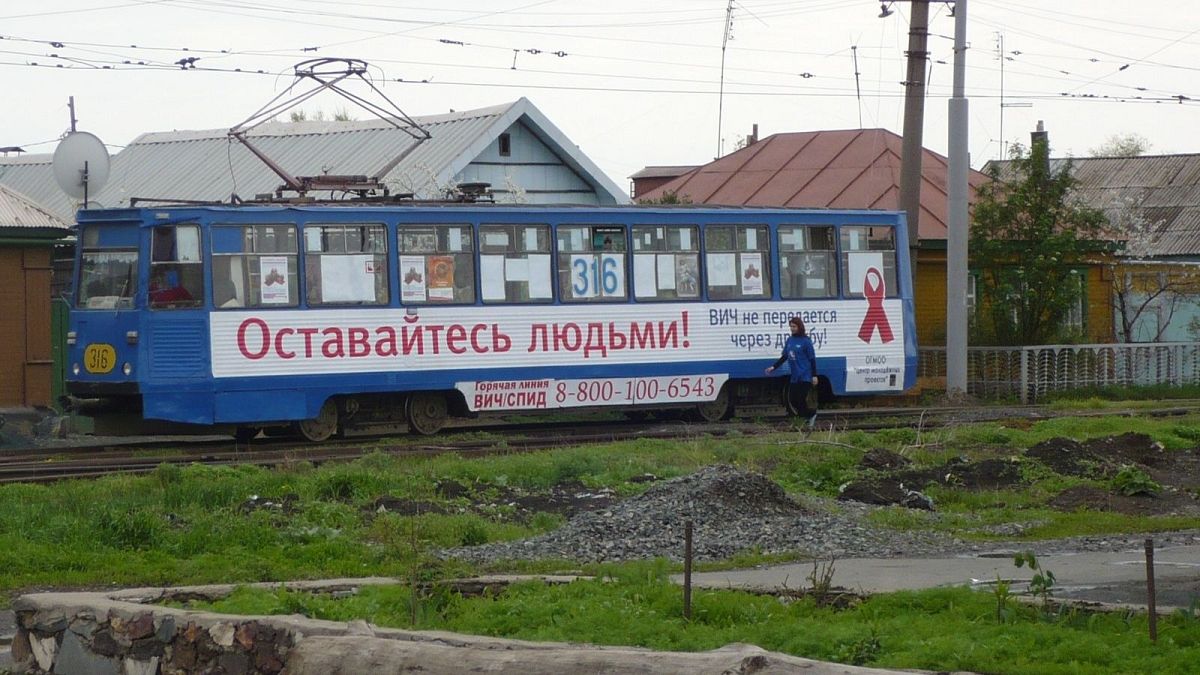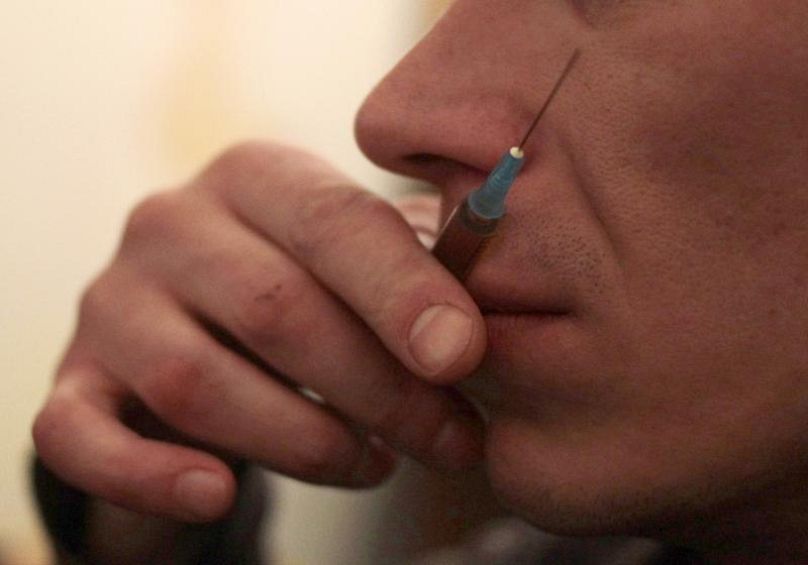Russia is one of the five largest emerging epidemics in the world for new HIV infections, AIDS experts tell Euronews.
"When I was diagnosed, I was ready for it: there were rumours that there was such a disease among those who use drugs, but for the first five or six years I did not go to the AIDS center," says Maxim (name changed), a 40-year-old resident of Orsk, one of the most affected cities in Russia.
Here, on the border with Kazakhstan, where drug trafficking took place in the 1990s, 2.6% of the population lives with this diagnosis. Since then, the virus has spread beyond high-risk groups to affect all sectors of society. In 2015, only 20% of infections occurred through the needle and 75% through sexual transmission.
"I found out about my status by accident. I visited doctors before an operation, took all the tests, and I was told that I had HIV. I cannot say that it was a shock. It's not a shock, it's the end of my life." Tatiana’s voice begins to shake as she recounts her story.
Tatiana, an office manager, found out in 2005, when she was 39. For the first few months, she was "in a state of terror" and then joined the AIDS dissident movement which denies the existence of the virus.
"Then I accidentally saw in our local newspaper that there were self-help groups for positive people. I didn't immediately decide to go there: I stumbled upon this ad several times and even cut it out, keeping it at work so that I could have the number," she says.
It was the 12-step self-help group that helped Tatiana accept her diagnosis. "I was the oldest in the group. Looking back, I realized that there were no people there who were being written about, such as ‘drug addicts and prostitutes’. My group included normal people with their families and children. Only then did I realize that people were living with it and went back to the AIDS center," she said.
'We were left without anything'
According to experts, the situation in the Orenburg region is indicative of a wider problem. "The scale of the HIV epidemic and the number of new infections in Russia are the highest in eastern Europe and central Asia. Russia is one of the five largest emerging epidemics in the world in terms of new infections," Vinay Saldanha, Regional Director of UNAIDS, told Euronews.
Mutual aid groups appeared in Orsk thanks to the initiative of local residents who founded the NGO Alternativa. Over the 15 years of its operation, it implemented about 40 projects in the city and raised more than 19 million rubles (€270,000) to address HIV-related issues. However, due to the lack of funding, it was eventually on the verge of being shut down.
“We had a women's centre where we implemented our projects," said Rostislav Lamert, director of the organisation. “We received money from three foundations, including UNICEF. When Globus (a charitable foundation) finished its work on the territory of the Russian Federation, we ran out of money and gradually built up a debt for heat and electricity.”
In order to pay off the debt of 180,000 rubles (€2,500 euros), the organization applied for municipal grants, appealed to urban businessmen and also went to the governor of the Orenburg region. Part of the debt was repaid, but it was not enough.
"We had good relations with social and medical workers. We organized self-help groups. Not the scant information provided by the AIDS Center, but real consultations from people who have already gone through it and adapted," Lamert added. “We were left without anything: no space, no support, no possibility to raise funds.”
In June, Alternativa donated its fully-equipped premises to another NGO that rehabilitates children with cerebral palsy. “Our goal was to keep the premises in a non-profit organisation," said Lamert. “This is the only thing we could do.”
Without Alternativa's help, Tatyana said she wouldn’t have gotten through this period of her life.
Lack of specialists a problem
There are 230,000 people living in Orsk. According to official data, more than 4,500 of them are "positive", although experts believe that this figure is greatly underestimated. Only two infectious disease doctors and one pediatrician work in the city. In 2011, local activists started building a modern AIDS center in the city, but soon its construction was stopped.
According to Tatyana Tetyushkina, a doctor at the Orsk AIDS Center, the clinic's capacity is 50 people a day, but thanks to the recording system introduced several years ago, the burden on doctors is "stable". "Lack of specialists is really a problem," she said.
"There are more than 100 AIDS Centers in Russia, but they were created when the number of people living with HIV was in the tens of thousands. Now there are more than 900,000," Saldana said.
In 2017, Russia adopted the State Strategy to Combat the Spread of HIV Infection. The government notes that the situation has since stabilised. According to official data, since 2017 the number of new infections stopped at the level of 85-86,000 people.
Worldwide, the HIV epidemic is stabilizing. In 2016, UN member states officially set a target to reduce the number of new infections by 75% by 2020. On average, the number of new infections in developed countries has fallen by 12% since 2010.
Among the main challenges in the fight against HIV in Russia, Saldanha names insufficient prevention among key populations. "Information campaigns, such as Stop HIV/AIDS is the most important work in mobilizing society. But condom or disposable syringe programmes are needed. Outreach activities are also very effective when employees of NGOs, dispensaries and AIDS centres work within the drug user community," he said.
Side effect
Two big problems in treating the disease in Russia were highlighted by the experts. One, according to Tetyushkina, is that the patients often work away from home for as long as a few months at a time. They therefore cannot go to their appointments, and their doctors cannot see whether their treatment suits them.
Another is the different treatment regimens prescribed, and their side effects. Maxim started taking medication only a year ago. "One of the reasons why I didn't want to start early therapy was because of constant drug failures and a dysfunctional system. I didn't want to jump from scheme to scheme, to tolerate side effects," he said.
"Throughout Eastern Europe and Central Asia, physicians have been prescribing dozens of different treatment regimens over the years. These regimens in different combinations are not only out of control, but are also very expensive," Saldanha said.
According to the latest WHO recommendations, some countries have started to transfer their patients to one tablet, the so-called Fixed Dose Combination. In Russia, only 5% of those receiving therapy are on this tablet. "We see that people who take only one pill have a better quality of life, a better consistency of treatment, and fewer refusals of treatment," Saldanha said.

